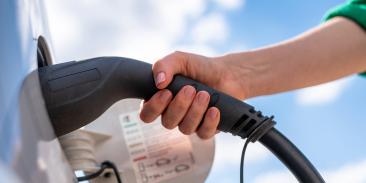New rules, innovations will build a clean energy economy
The United States is expected to spend some $2 trillion over the next two decades upgrading its aging power grid. That spells opportunity for a nation that has always chosen innovation over business as usual.
In a recent op-ed piece in Power Magazine, Environmental Defense Fund President Fred Krupp describes how the United States is now laying the groundwork for a clean energy economy through policies and market forces that are beginning to work in tandem to accelerate change.
The landmark Clean Power Plan that the U.S. Environmental Protection Agency proposed in June places the first-ever limits on carbon dioxide emissions from power plants, giving states the incentive to shift to cleaner energy sources and the freedom to design their own paths to compliance.
Renewable energy, of course, is already the fastest-growing power generation sector in America, with just wind and solar now making up more than 4 percent of total market share.
American businesses, meanwhile, are developing products and services that cater to energy-efficient homes where consumers control their own power consumption.
“Perhaps most importantly,” Fred writes, citing a recent Yale University poll, “public support for clean energy is at a record high…People care about energy because it touches everything that we do, and Americans are tired of hearing sad, old myths about why we can’t move forward.”
Read his full op-ed piece here.












I am curious as to why EDF continually ignores recommending, along with wind and solar, innovative research on and expansion of nuclear power in the USA, as is going on in other countries. After all, thorium is continually being converted to uranium 233 in a breeder reaction in the earth's mantle, driving the convection currents that move the tectonic plates. We can harness this same power, using thorium, an abundant and cheap element, available worldwide along with rare earths.
Ben Hammett
July 8, 2014 at 8:08 pm